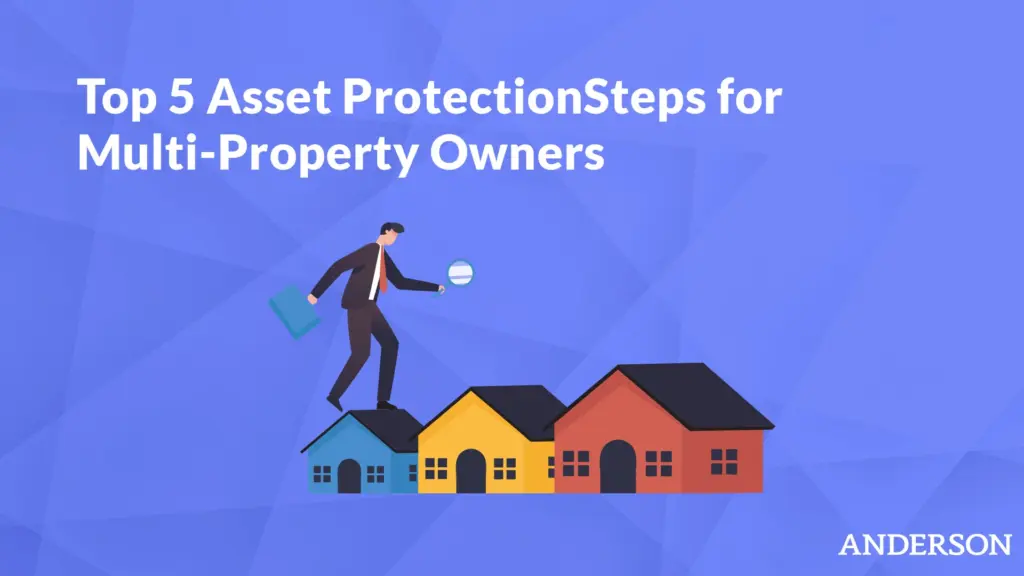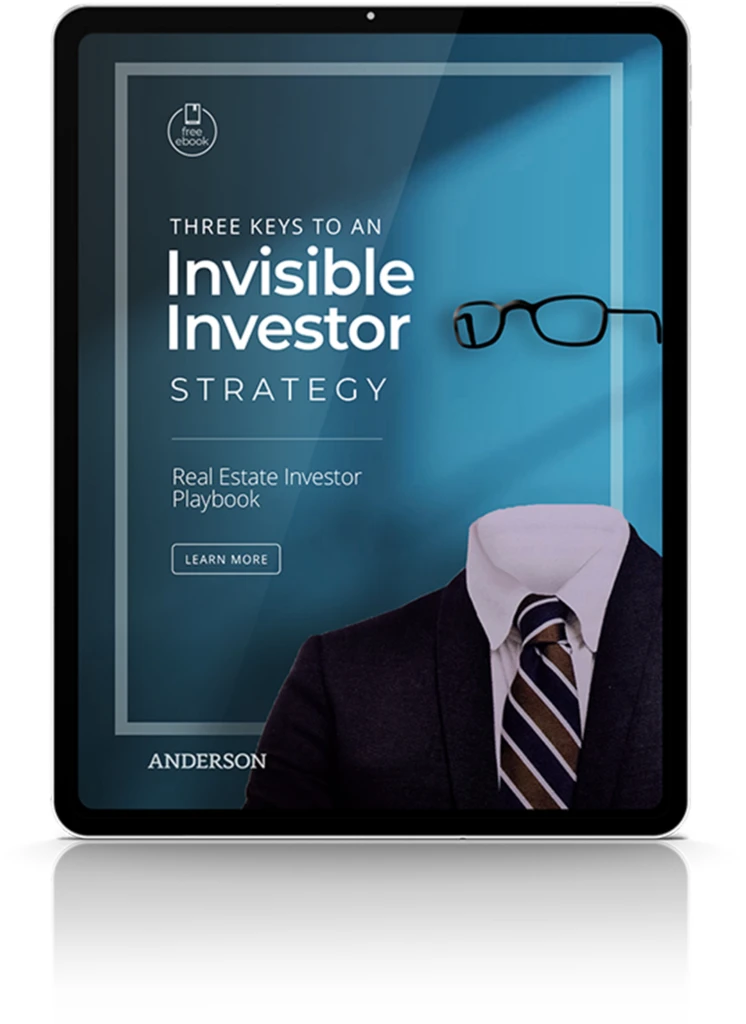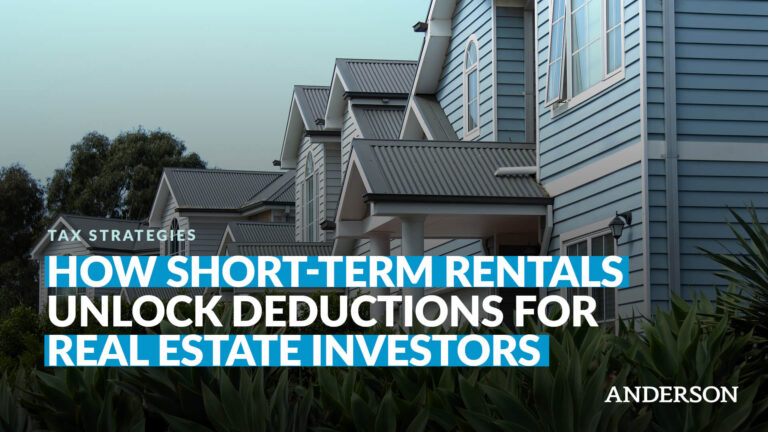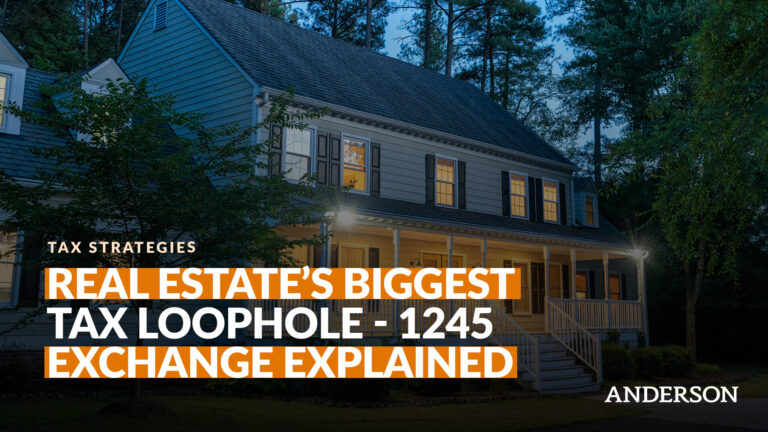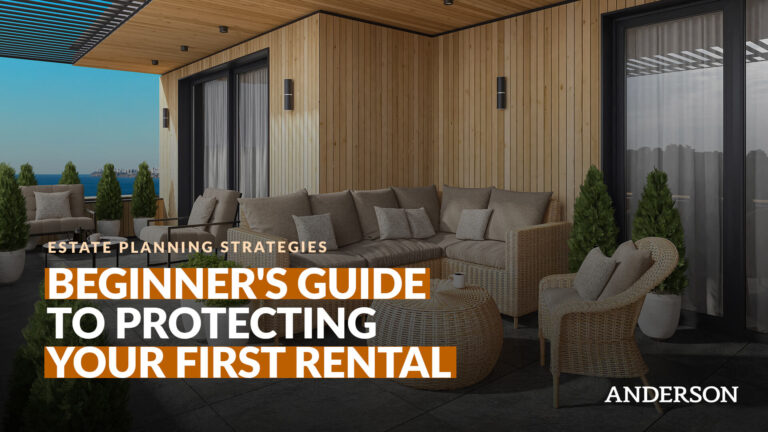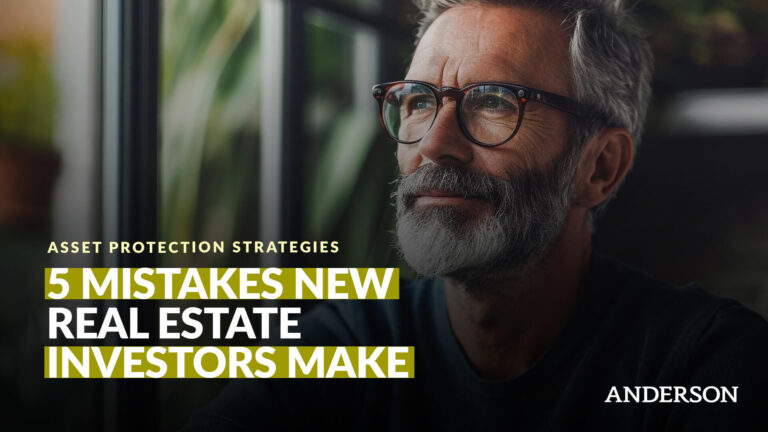

In this episode, Toby Mathis, Esq., of Anderson Business Advisors, sits down with Ryan Gibson from Spartan Investment Group to discuss the current housing market and the unique opportunities in self-storage investing. They explore how the housing market has changed with low transaction volumes due to homeowners holding onto low-interest-rate mortgages, creating opportunities in alternative real estate sectors.
Ryan explains how self-storage offers advantages over traditional rental properties, including no evictions, automated operations, and steady cash flow. The discussion covers Spartan’s approach to acquiring mom-and-pop storage facilities and professionalizing their operations, the different investment strategies in self-storage, and how millennials have become the largest demographic using storage facilities. With over 800 million dollars in assets under management and a track record of 16 successful exits, Ryan shares insights on market consolidation, value-add opportunities, and why self-storage has been the best-performing commercial real estate asset class.
Highlights/Topics:
- (00:00) Intro
- (00:58) Current Housing Market Update
- (05:20) Self Storage Investing Benefits
- (08:33) How to Consider Investing in Self-Storage
- (12:39) Different Types of Strategies
- (15:40) Big Opportunities
- (19:23) Millennials are Using Self-Storage the Most
- (21:33) Self Storage is a Great Asset
- (22:44) Outro
- Share this with business owners you know
Resources:
Learn more about Ryan Gibson and Spartan-Investors https://spartan-investors.com/
Schedule Your FREE Consultation
Tax and Asset Protection Events
Full Episode Transcript:
Toby: Hey, guys. Toby Mathis here and I’m joined by Ryan Gibson. First off, welcome.
Ryan: Thanks for having me.
Toby: Ryan is over at Spartan and they do a very unique type of real estate investing, something you’ve probably heard about. I’ll let him explain it, but I want to set the table.
Right now, we are sitting here in an economy where you have people forecasting doom and gloom in the housing market. Like oh my gosh, there’s so much inventory. There are half a million properties. Or we’re up to four months of inventory.
Then you have things like the Case–Shiller Report comes out yesterday and says, home prices year over year are up 2.7%. Some people are like, well, see, that’s horrible and other. But again, there are all these folks that have been predicting the downfall of the housing market and they’re continuing to be frustrated. Ryan here, what are you guys up to? About $750 million of property?
Ryan: Over $800 million with $100 million on our contract right now.
Toby: Ryan’s in a very niche area, so let him explain that. But what are you seeing in the housing market before we get into what you do?
Ryan: For the last three years, people have not been transacting like they have been. We’ve seen the lowest inventory or the lowest sales volume of housing over the last—
Toby: It’s in the toilet.
Ryan: Yeah. It’s been the lowest trading since 1997. We actually have seen a very low point in home sale volume, which means people aren’t moving as much. People are staying where they are and they’re not actually buying new houses.
The multifamily association recently put out a stat that the renewal rates of multifamily leases are the highest it’s ever been at over 85%. There are a lot of people just staying put, staying in their fixed rate loans and not selling their house.
Toby: Why would they? They’re sitting on a ton of equity and they have really low interest rates. The sub‑to people, by the way, are taking this one and they’re yeah, we want that mortgage. I’ll take it over for you. But unless that’s you, you’re probably sitting here going, I would not sell my house if I have a 3% mortgage, if I’m going to have to renew it at 7%. It just doesn’t make economic sense, so they stay in the home.
Ryan: Stay in the home. A lot of people are renovating more now, too. They’re not leaving.
Toby: I saw forecasts, again Home Depot and those guys saying, hey, there’s going to be more home renovation. But at the end of the day, people aren’t moving around as much and they’re confusing. The fact that people need to stay with the market is bad. It’s the opposite.
You have people that don’t have to sell because they are sitting on a ton of equity. This is very different from 2007 and 2008 where people were underwater in their mortgages. Here, the average American has $200,000+ of equity. They’re not forced to sell and they have these fixed rate mortgages over 80%?
Ryan: Ninety-five percent according to Bank of America. Ninety-five percent of Americans have a fixed rate mortgage.
Toby: Do you know the percentage? I think it’s 80% or something, it’s below 4% or something ridiculous.
Ryan: Really? That doesn’t surprise me at all.
Toby: I’m guessing on that. You guys can google it. Go to ChatGPT.
Ryan: Exactly.
Toby: But it’s a really low interest rate. A lot of people are just eh. Maybe if interest rates start to slow, you see some more volume, but average inventory over history is about six months. We’re not hitting that, and the people that are like, oh my gosh, it is now a buyer’s market.
Ryan: Barely.
Toby: They’re missing what’s actually happening. Now it has become very difficult. There’s a chart that I like to use, which is the fair market value of homes compared to the rental market. What happened in 2007, 2008, and 2009 is that the value of the homes were so high, but the rental value, what an investor will pay you for the house, was a huge gap in it.
All these people are sitting on a house, and now they have to sell it because they have an adjustable rate mortgage, they’re underwater, whatever. Here come the investors. The banks like BlackRock came in, all of us investors, we were buying everything we could get our hands on. But the million dollar house you have isn’t a million dollar house to an investor. It’s $250,000–$300,000.
Those numbers are really out of whack right now, but it’s a different marketplace. It’s almost like those rents have to be forced up, but they’ve been Steady Eddie. They’re not going up. The home values are continuing to… something’s going to give.
Ryan: Something’s going to give, yeah.
Toby: It’s an interesting market that maybe if they lower interest rates, you see a bunch of people dumping houses. But they’re not. Again, it’s not 2007 where they’re forced to sell, they’re foreclosing, and there are deeds in lieu of foreclosure.
What you’re going to see is people, hey, I thought I was going to make $230,000. I’m only going to make $210,000. I just lived that. I just sold a house where it had gone up considerably in the last five years, shockingly. I was like, I think I’ll dump it. It was too much to carry and the rents weren’t really justifying its existence.
We offered at a really high number, and within two weeks sold it at a slightly lower number. Of course, on a stat they say, see, you’re lowering your price. It’s a buyer’s market. But no, it’s not where we’re at.
Explain your niche and how this plays into it.
Ryan: We’re self-storage investors. We’ve been self-storage investors for over a decade now. We focus on markets that have high population growth, net migration, good trends of people moving to a market. We’ll go buy mom and pop operators, we’ll buy a whole bunch of them, and then we’re aggregating that into a big portfolio where we can benefit from transitioning a mom and pop operator into professional management.
Toby: So self storage, just make sure we’re talking about that, it’s like public storage, right? That’s you guys.
Ryan: That’s right.
Toby: It’s no toilets, no tenants living there. They’re just dropping their stuff off and they’re visiting it once in a while.
Ryan: Yes, and no evictions.
Toby: No evictions.
Ryan: We put a lien on everybody’s belongings, and if you don’t pay after 30 days, we could sell all your stuff and get our unit right back. I think that’s one of the most compelling things about storage is number one, we can automate. People don’t even have to talk to anybody. They don’t have to have leasing agents or things like that at the property all the time.
We do have a call center and people that lease units, but you can rent a unit online, 24 hours a day. You can talk to a call center, you can scan a QR code, move yourself in. And if you don’t pay after 30 days, we can lien your belongings, auction off your stuff, and get all our money back.
Toby: So you’re not tied up in court dealing with the tenant that says, hey, you didn’t give me enough notice, or this is unfair, you’re discriminating or whatever else. You’re not tied up in all that stuff.
Ryan: Not only that, but when we go into the unit, it’s a dust pan and a broom to move out the tenant. We don’t have to deal with a trashed, pissed-off tenant.
Toby: Now I have hundreds of units of single family and it’s all in multi-family. We have apartment buildings and commercial. Yes, that is actually a thing. The turn, as they call it. The turn of a unit.
Ryan: It’s interesting. I had the chance to sit down with the guy that built the very first self storage in the state of Washington in 1972. I said, what’s changed over the last 50 years? Because he is still in the business, he’s 84 years old. Started a big company, 650 storage facilities.
He said, nothing’s really changed. Customer service is still a thing. He built the first ones in Washington. He had 16 facilities in the whole state at one point. He was worried at that time that he had overbuilt. He was like, oh man, I can’t fill up the next one that I build.
Toby: That’s like having 16 McDonald’s in the state. I don’t know if I could add more.
Ryan: It is funny because we talk about the same thing today. Is it overbuilt or are there too many? And we can speak to that.
Toby: It’s a ratio, isn’t it?
Ryan: Yeah. Americans use six square feet per person.
Toby: That’s it. When I say a ratio, it means you can calculate. There are 100,000 people that live in this area. Here’s how much storage space they need. You look at it and say, here’s how much storage space is built. Here’s what the market will bear.
Ryan: Subtract it out.
Toby: Yeah. Is it that easy?
Ryan: It’s a rough wag. You still want to go and mystery shop the market. You want a well-located site with good drive-by traffic. You still want to have good population growth, good economics with the demographics. But yeah, at the end of the day you can pretty much go in and calculate the demand, and there are people out there that do demand studies.
I thought what was interesting about him was he said, the reason why I got into self storage, built that very first one, was because we get the same rents per square foot as multifamily, but we are a third the cost to build and operate.
Toby: I’m going to dump all my… I’m just kidding. I have both, but let’s talk about this as an investment opportunity. A lot of the folks that watch this channel, my channel, which, by the way, give comments on what you think of what Ryan has said thus far. Do talk, we’ll forward it, we’ll go back and he’ll answer.
But a lot of people want to get into these types of investments. I’m going to do a cautionary tale. It seems in self storage that there are some very big players, then there are the little guys that come in, and the little guys get squished. The middle guys seem to get eaten.
I would say it’s a good thing to get eaten by the big guy. If there’s a shark, here’s the swish me, you want to be attractive, lots of chum, this is really tasty, come in and gobble me up. Because that’s your exit, right?
Ryan: That’s exactly right. If you look back about 10 years, you would see operators like Sureguard. You would see operators like Simply Self Storage, Life Storage, Uncle Bob’s. Well guess what? Life Storage gobbled up Uncle Bob’s, and then Life Storage was then gobbled up by Extra Space.
It’s a rapidly consolidating industry ,and the mid-tier guys are all getting swallowed up by the big REITS, Public Storage, Extra Space, CubeSmart, and ultimately institutional funds that back those companies or back other companies.
Toby: Let’s talk about what Spartan does. I am a Spartan investor in multiple cases. There are different ways to invest in self storage. It’s not just, hey, I’m just going to go invest in a company that does self storage. There are multiple ways to get involved. But what does Spartan do? Do a shameless plug and tell people why Spartan has been successful.
Ryan: I think that we’re the 30th largest operator of self-storage in the United States. We have over 800 million self storage facilities. I would say our experience doing lots of transactions, lots of storages, our economies of scale, we actually build our own self storages with our own construction company. We have our own property management company called FreeUp Storage that operates over 61 sites. We have over 75 facilities nationwide.
I would just say from our experience going into different markets and getting our economies of scale, we’ve been able to find really great properties, attract investors to fund them and invest with us. Then we’ve been able to operate successfully. We’ve had 16 full cycle exits that have all produced a positive return. I would just say our scale and our team are really what make the difference.
Toby: Did it start off easy? Again, because there are people out there and they’re like, I could do this. I’ve seen the crappy RV storage place down the road that looks like they barely are there. We’ve all seen them. It needs a little tender loving care, but somehow those things cash flow. They’re thinking I could do that.
Ryan: We got into the industry, we flew around the country, we went to all the conferences, things that. We networked with all the big players in the space. It took us two years to find and buy our first one. Not because we weren’t motivated or trying hard, but we had a very specific investment criteria. We said no a lot. We narrowed down what we were looking for.
If you want to go buy a self-storage facility, just go to LoopNet and look for one. You can buy one. And you can buy some garbage. Then you’ll realize that it doesn’t produce enough income that will justify a call center. It won’t justify the revenue management. Now you have a job, and it’s a pretty miserable job managing your storage property.
I would say be really defined in what you want to do. I think that’s really fueled our success. That’s why we were able to grow fast and be one of the fastest growing companies on the Inc 500, is because we had a strategic plan and a vision for exactly the type of facility that we were looking for, that made sense with our acquisition strategy.
Toby: Again, I’ll say this because as an investor there are different types of projects you want to be involved in. I would say in self storage—correct me if I’m wrong—it seems like they’re falling in three categories.
It seems like you could buy existing architecture, existing units storage, you fix them up and run them more efficiently because somebody’s not renting out all the units. They got all their cousins and everybody else storing stuff there. Or maybe they just haven’t fixed it up. There are the existing units, there’s building your own units, and then there’s just being the lender and saying, hey, I want to back this. Am I missing any of them?
Ryan: One more. I would say you could buy an existing one that has an expansion opportunity. You could buy property that has additional units to add on. I would say that the market’s dead right now. It’s hard to justify expansions in a lot of markets because the rent or the construction costs, the borrowing costs are super high.
But I would say markets that have a ton of demand and really strong rents, you can find. Little niche markets around the country where you can get the rents that you want and build ground-up.
Right now, our focus has been not buying the C and B class properties. The reason why is because when people have options, when the market softens a little bit, where do they go? They go to the A because the A has to discount their inventory. And now the B has to discount the C and it gets harder and harder and harder. It’s easier to track investors to class A.
You’re probably wondering, okay, how do you add value to a class A facility? Some of these mom and pop operators are not charging tenant insurance. We just bought a property today in Lincoln, Nebraska. Two properties, and the seller was not charging any tenant insurance.
What that means is the 800 units that they have, let’s say it’s 500 units for math, $13 a unit is what we can charge for tenant insurance on day one. We get 70% of that income. Over 500 units.
Toby: That’s $8000 or…
Ryan: It’s $6000 or $7000. I’m not math in public. It’s not my strength.
Toby: $13 times 800, that would be $10,400.
Ryan: Yeah, $10,400 a month times 12 divided by 0.06. You’ve just added $1.5 million of value to that property. We find properties like this.
Toby: You just lost a bunch of people.
Ryan: I know.
Toby: What he just did is the cap calculation.
Ryn: That’s right.
Toby: Here’s a simple rule, guys. Ready? If you’re buying a house residentially, you’re buying on comp. What square footage is in the…. That’s what your realtor’s going to pitch you on. Investors buy on cap, which is the cap rate, what it’s returning.
What he just did in his head is you get a little piece of paper out and it’s really simple. Its net operating income divided by the cap rate equals the fair market value. But any changes in that operating income, anything that you bring to the bottom line, divide it by the cap rate and your good realtor in a local area will know what the cap rate is. You could say, boom, I just made my property worth $1 million out of just thin air.
Ryan: The thing that I have to say is, for every $1 that you earn an additional income, you add $16 of value.
Toby: That’s a good way to look at it.
Ryan: Yeah. Divided by 0.06, I hope I’m doing that math right. If I charge an extra $13 a month and I get 70% of that, about $9 times that by 16, that’s how much value I’ve added in addition to the cash flow that we get. There are massive opportunities. In that 95% occupied market, the seller was below what everybody else was charging. Not charging tenant insurance, we’re just going in and adjusting the rents.
Toby: And that, ladies and gents, is why you deal with someone who knows this stuff, because what you don’t know, you usually come up and bite you in the ka-tush. What’s interesting is a lot of the mom and pops are really happy. Not with leaving that money on the table. They’re like, but I’m happy. I’m not selling boxes and tape. I don’t have an automated system. I don’t do with them computer things. We let people in and we have a key.
Ryan: That’s exactly right.
Toby: They’re happy making this margin, and you could buy it based off of this margin and then make it this margin. When you do that, you double the value. I shouldn’t say double, but you’re increasing significantly the value of the asset. If you buy it right, especially if you’re using decent financing, you could really have huge returns.
I’ve seen my clients and I’ve seen mine and people do very, very well in storage. I would believe, if I’m not mistaken, that it’s one of the best asset classes in real estate, period, out there.
Ryan: Yup. The REITS just sent out a report recently, and self-storage is factually the best-performing commercial real estate asset class, period, over the last however many years they’ve been measuring it. That’s because of life events.
I always joke that people use storage because they have too much stuff. But if you ask people why they use self-storage, it’s one of the five D’s, or I used to say four D’s but now five—death, divorce, displacement, downsizing, and diapers.
My story is I thought it was really stupid that someone would use a self-storage facility when I got into it. Then I had a home renovation because my family was getting bigger. I moved all my stuff into self-storage. I put my stuff in there and I’m thinking, oh, it’s only going to be three months for my renovation. Took me 12.
After about five months, the owner raised my rent 20%. I was like, argh. I was angry at first, but then I was like, what am I going to do? Everybody else is full. $100 is $20, and if I get a truck and all that and I move down there, it’s going to cost me $200 of my time to move it into a new facility anyway.
That’s what got my wheels turning. I talked to the owner and he’s like yeah, we just raised the rents and people don’t really move out.
Toby: Because what are they going to do? Where are they going to put it?
Ryan: Where are they going to go?
Toby: Maybe a competitor, but…
Ryan: Their fault. Or charging more.
Toby: Or it’s a horrible facility because it’s run up by… You don’t want to have your stuff there because it’ll disappear. I just had a friend and a client who ended up being his executor. We ended up with the storage unit that we found in Washington, and was in Vancouver, stacked to the ceiling, which is random stuff.
We were thinking of the Storage Wars. We’re going to go in there, we’re going to roll it up and there’s going to be a Picasso and then… It was just a bunch of crap. Just that he didn’t want to get rid of it.
Ryan: Baby boomer or millennial? Who was the…
Toby: He would be a boomer.
Ryan: Okay. I think it’s interesting to talk about, because millennials are actually the largest generation that uses self storage right now.
Toby: Really?
Ryan: When I got into the industry 10 years ago, the industry kept saying, who is going to be the replacement for the boomer? Will the millennial actually start using storage as much as boomers were? Because boomers were using self-storage the most, They’ve dropped off, millennials have taken over.
What’s interesting is boomers use self-storage way differently than millennials do. Boomers had all the heirlooms, they had the floor-to-ceiling packed self-storage. They have china, they have all the things that they wanted.
Toby: That’s what it was, It was paintings and all this weird.
Ryan: There are no Picassos.
Toby: I was like, this has got to be valuable. No. What about this?
Ryan: And the millennials, we don’t want that stuff. But millennials are using storage entirely differently. It’s experience stuff. It’s dirt bikes, mountain bikes, snow skis, snow tires, and stand-up paddleboards. Because their apartments are small,
Toby: It’s so expensive. I was going to say, it’s expensive to rent a living space that you’re like, okay, how about this? I rent a thousand square feet. Then I go get the cheaper one, how much is it as a ratio? Is it like one-tenth the cost or something?
Ryan: Usually, per square foot, you’re going to pay similar as your multi-family rent, but you can size it to exactly what you need to a 5×5. You can stuff a bunch of stuff in the closet.
Toby: I’m thinking houses. If I’m buying a house…
Ryan: You’re buying a house, exactly.
Toby: I’m like, oh my gosh. But I could rent a 500 square foot…
Ryan: The average unit price is $90 a month, so it’s cheap. It’s super cheap.
Toby: We had a big one. It was $300. It was huge. I was like, I want that as my garage.
Ryan: You can rent from us in Vancouver.
Toby: I don’t live in Vancouver, and we’re getting rid of all that stuff. But we had to get a forklift. There was so much stuff.
Ryan: Holy cow.
Toby: It’s always shocking to me when I look at this, and now I’m realizing, yeah, I have my garage. I don’t even park a car in it anymore. You’re just putting stuff in there.
Ryan: And 66% of our customers also have a garage. It’s crazy. One in nine Americans use self storage, and most of them have garages.
Toby: What about garage bands? Come on. You got to have…
Ryan: There might be a garage band in there.
Toby: To me, this is one of the hidden real estate strategies. I’m always saying, hey, you want to diversify? I’m a big single family guy. That’s just in my bones. I buy little houses all the time. I still do some multi, but I’ve started adding self storage years ago with you guys, and I’m of the opinion that it’s a great asset to add into your real estate portfolio if you don’t want to have all the ups and downs. It seems it’s pretty Steady Eddie. That’s my experience. Is that…?
Ryan: Yeah. If you look back over, even during the COVID timeframe, distressed real estate by asset class, self-storage is almost no distress, no late payments on mortgages or no distress in the industry. Credit IQ puts that report out.
Toby: Then I’ll make it easy for you guys. Go down in the comments. If you have a question for Ryan, write it in. We’ll either send you a link where they can reach out to you guys or somehow we’ll respond to you, somehow some way get it in there.
If you just want to talk to Ryan and this team to say, hey, I want to talk to Ryan, we’ll send you a link where you can go with there. There’s absolutely no pressure on this. But if you want to learn about this stuff, you want to learn from a guy like this. I know Scott, your partner as well. We watch them continue to grow. They’re doing it the right way. They are the medium fish. You’re number…?
Ryan: Number 36, exactly.
Toby: Number 36, which means everybody that’s above that is looking at them going, I want to buy your stuff. Probably the top 10 or probably eating everybody else.
Ryan: That’s right.
Toby: But it means that you always have an exit, you’ve done really for our clients, and I really appreciate that. If you guys can, like and subscribe. Reach out to Ryan to say, hey Ryan. Reach out, or any questions you have, we’ll make sure. Thank you for joining us.
Ryan: Thanks for having me. Good to see you.


